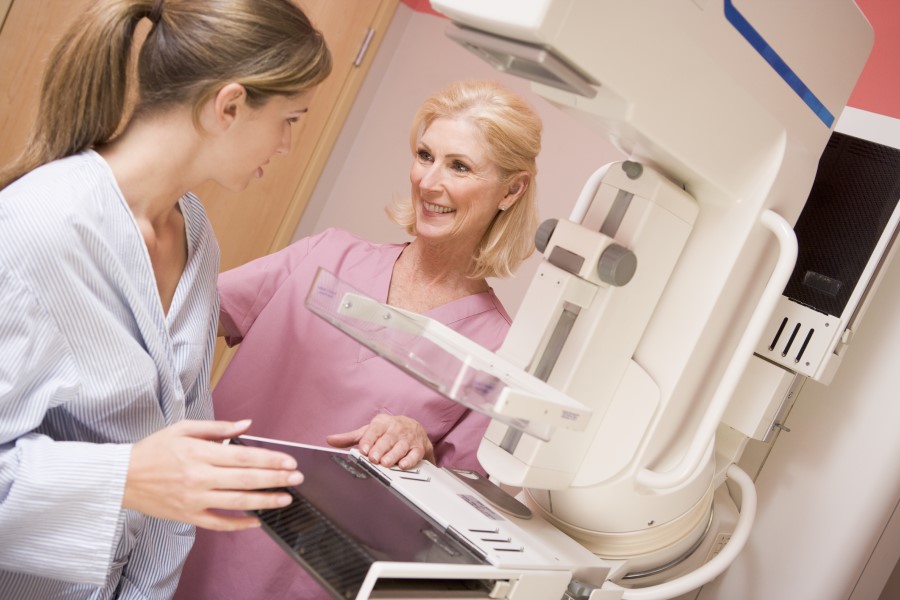Your Breast Cancer Risk Using the Tyrer-Cuzick Calculator

Although breast cancer is one of the most commonly diagnosed cancers among women in the United States, there is good news. Thanks to advances in risk assessment tools (e.g., the Tyrer-Cuzick calculator) and screening tests, the breast cancer mortality rate has declined by nearly 40% since 1990, according to the American Cancer Society. Finding cancer sooner when it’s smaller means less extensive treatment and better outcomes.
Risk assessment tools can predict the likelihood that you will develop the disease at some point in your lifetime. If your breast cancer risk factor is higher than average, your doctor may recommend additional screening tests.
How Is Risk Defined?
According to the American College of Obstetricians and Gynecologists (ACOG), the average risk of developing breast cancer is about 12 percent—meaning that about one in eight women will be diagnosed with breast cancer.
What Are Risk Factors?
A risk factor is something that increase the chance of getting a disease.
What Are Breast Cancer Risk Factors You CAN Control?
- Exercise: Get moving, especially after menopause!
- Diet: Monitor your intake to avoid being overweight and weight gain after menopause.
- Hormone replacement therapy (HRT): Talk to your doctor about taking HRT especially if it includes both estrogen and progesterone (vaginal estrogen is not linked to increased risk).
- Age at pregnancy: Women have a slightly higher risk if they haven’t given birth or have their first child after age 30.
- Alcohol: Limiting or eliminate drinking alcohol may lower risk.
- Tobacco: Avoid smoking and heavy exposure to secondhand smoke.
What Are Breast Cancer Risk Factors You CAN'T Control?
- Getting older
- Race and ethnicity (for example, while the incidence of breast cancer is similar, Black women have more aggressive breast cancers developing at earlier ages and lower survival rates compared to White women)
- Genetics (mutations passed on from a parent)
- Early menstrual periods (before age 12) and late menopause (after age 55)
- Family history of cancer
- Breast density
How Can My Provider Estimate My Risk Accurately?
During your mammogram, the technician may use a screening tool like the Tyrer-Cuzick (TC) calculator, which predicts an individual's lifetime risk based on multiple factors about personal health and family history.
The TC calculator is integrated with an electronic medical record system. The technician may ask you to confirm that the personal health and family information is accurate and use the calculator to extrapolate the data and generate the score.
The average breast cancer risk score is 12%. If you score above 20%, you may be advised to undergo additional testing (e.g., breast MRI) once a year in addition to an annual mammogram.
Ideally, the timing of the tests should alternate every six months. For example, you could have a mammogram in January, and then an MRI in July and a mammogram in January, and so forth.
What Is Special About the Tyrer-Cuzick Calculator?
The TC calculator gives even more insight into your breast health than just having a mammogram. The tool supplements the screening, so you and your doctor have a clearer picture of your risk. The TC calculator also incorporates breast density into the equation.
Studies show that people with dense breasts have a higher risk of cancer. Density can make it more challenging to see cancers in early stages from the mammogram.
People who have dense breast tissue can talk with their doctor about the benefits of an automated whole breast ultrasound (ABUS) that scans the entire breast.
What Does All This Mean for Me?
Risk factors and assessment tools can help determine if you are at a higher risk, although it’s not foolproof. However, even if your risk assessment score is low, you should not skip your annual mammogram.
Mammograms and other regular screening tools help detect breast cancer in its earliest, most treatable stage, so it’s important to stay up-to date on screenings.
Don’t wait! Schedule your mammogram today!
Note: The content of this blog is for informational purposes only. It is not intended for use as diagnosis or treatment of a health problem or as a substitute for the professional consultation of a physician or qualified health care provider. If you have specific questions or concerns regarding a health or medical condition, contact your physician or a licensed health care professional.



